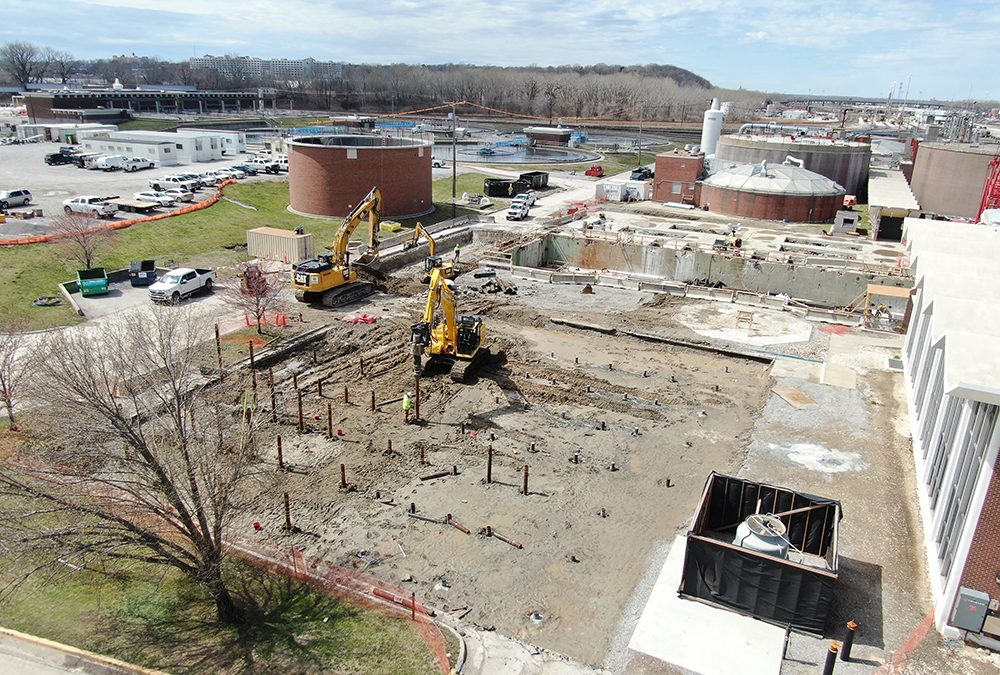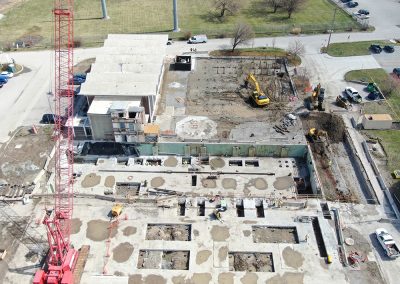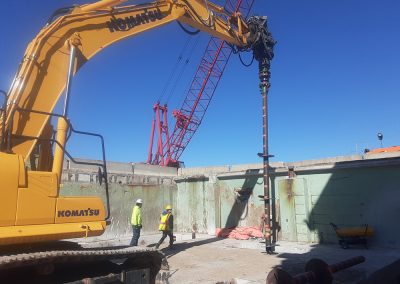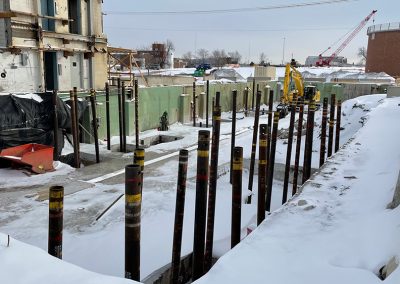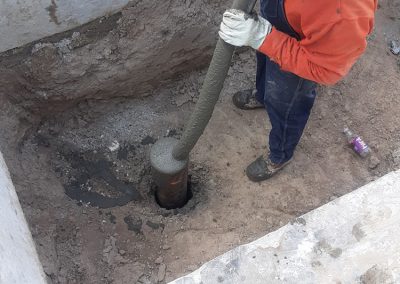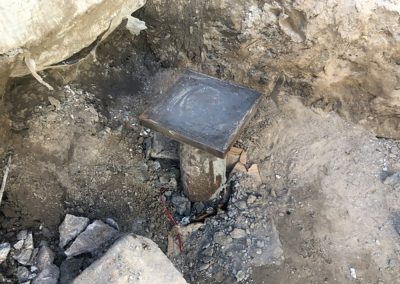Watch a video of helical pile installation.
A big part of recent construction at the Blue River Biosolids plant is the installation of over 200 helical piles. Chances are these helical piles, while not “piles” in the familiar sense, will be all but forgotten once building foundations are laid, but are undoubtedly unsung heroes. Plant building structures will rely on them for support for decades to come.
A helical pile, also called a screw pile, is a group of hollow steel poles piled on top of each other, end to end. The first pole, the one drilled into the ground, is about 20 feet tall and has a spiral on the bottom that resembles a helix.
Helical piles are a type of foundation installation mechanism used to support the weight of structures and prevent them from sinking into the ground. Helical piles are being installed in the biosolids building basement, Thermal Hydrolysis Process (THP) building, and cake unloading area.
Helical piles are drilled into the ground with specialized machinery (pictured on back). After the first pole is drilled into the soil, multiple units are connected end to end – “piled” on top of each another. A pile of poles can be drilled as much as 60 feet underground. Piles are usually installed in groups of two or more, and a completed group is called a helical pile “cap.” After the helical piles are in the ground, they are filled with grout and a steel plate is welded on top. Then, rebar is added and a concrete foundation is poured, concealing all evidence. Building columns are usually placed on finished helical pile “caps” during construction.
The first structures said to have used piles were in Switzerland in 4000 B.C., and the technology was used to build homes in Italy as early as 100 B.C. Alexander Mitchell is credited with inventing the modern-day helical pile in 1830, the version with a helix-shaped metal blade for ease of drilling. Mitchell was a blind, Irish engineer who used the first helical piles to support lighthouses in England. The 360-mile, man-made Erie Canal is said to be supported by over 58,000 piles.


